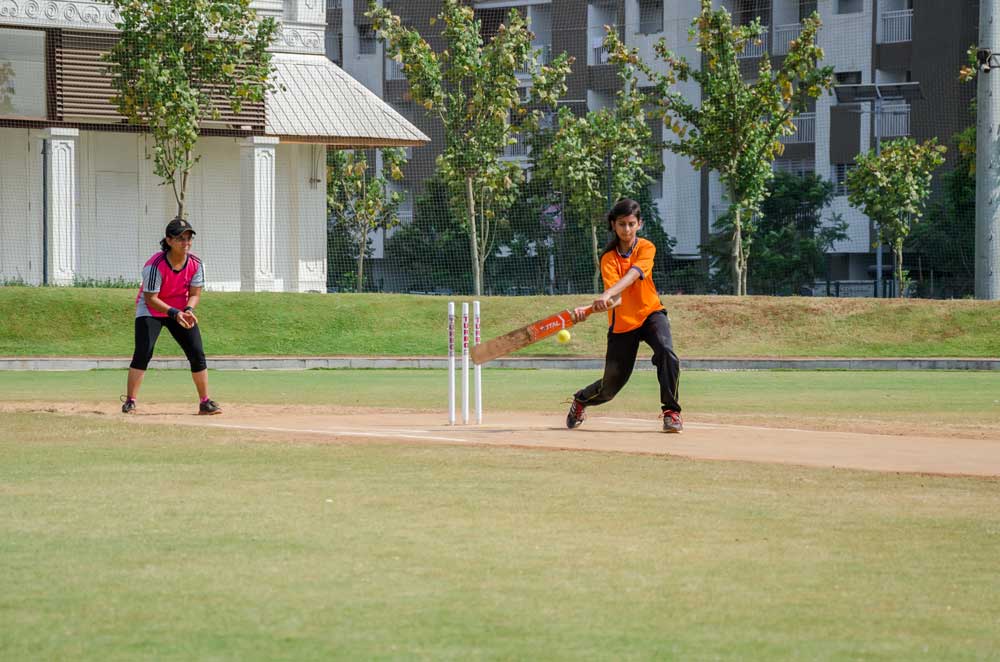There’s nothing better than a child who loves sports! To paraphrase iconic female athlete Billie Jean King, sports build character, they teach you about winning, losing, and how to play by the rules. Not just that, playing a sport is good to build both physical resilience and mental agility, while also inculcating values of teamwork and fair play.
But young children and those in their early teens who are learning a sport, are still in the process of understanding their bodies and their limitations. Further, they are more prone to injuries than adults, because they have open bone plates, since their bones and tissues are still developing. This makes them more susceptible to paediatric sports injuries. According to an article published in Stanford Children’s Health, almost one-third of all injuries in children are sports-related or caused by some sporting activity.
Abhilash S, a physiotherapist with Apollo Hospitals believes that injuries with sports are inevitable, but an ounce of prevention can make the cure that much easier. He says, ‘There are some precautions that parents should definitely when their children are pursuing sports. To begin with, regular physical examinations every quarter are a must, to identify any underlying weaknesses or issues that might place your child at added risk of injury. Secondly, choose a coach or a sporting centre where injuries are taken seriously. A coach needs to be trained to identify a serious injury from a cut or a graze, should know the basics of first-aid, CPR, and also be proactive at taking action if something goes wrong. The earlier an injury is addressed, the better.’
He adds, ‘Proper training is the key. Often there is not enough emphasis on technique, and the training is poor, leading to chronic issues. Sometimes coaches and parents also over-train their kids in a bid to pursue excellence, which could leave them with weaker and overused muscles. Listen to your kids if they tell you something doesn’t feel right, because they know their bodies. Don’t dismiss their claims without proper investigation.’
Another factor Abhilash brings up is using the right equipment. ‘This includes wearing the right footwear and also keeping safety gear handy, whether it is a training session, practice session or a tournament. Invest in good quality elbow or knee pads, shin guards, mouth protectors, helmets, goggles, and make sure they’re in good condition. Take hydration breaks as frequently as you can (water and coconut water are the best options for this), eat a light snack before playing, and have a protein-rich meal or snack a little after you finish. Stretching before and after high intensity sports is often ignored in kids, but it is so important. Ensure they spend at least 10 minutes doing this both prior to playing, and after that as well.’

Safe Kids Worldwide, a survey conducted by Johnson & Johnson, revealed that 54 per cent of young athletes said they continued to practice and play with injuries, because they did not want to let down their parents, trainers, or their team. The most common injuries they played with were sprains (27 per cent), general pain (21 per cent), and bruises (14 per cent). Athletes with serious injuries played as well –with nearly 7 per cent continuing to play with dislocations and even hairline fractures.
Dr Arwa Fathema, a paediatric orthopaedic says that sports injuries are typically of two types:
• Acute injuries that include fractures, sprains, cuts or concussions. These are typically caused by a blow or force of some kind. They can occur in a single moment and the impact and injury is instantaneous.
• Overuse or chronic injuries like tendonitis or strains that typically happen over time. These are usually caused by repetitive stress and training, and can impact either bones, muscles, or ligaments. You can actually prevent overuse injuries from escalating, by identifying them at the outset and taking immediate action. The longer you let them fester, the worse they get. The minute your child complains of pain, soreness or tenderness, get it checked.
Dr Arwa adds that there are various kinds of injuries that children can suffer from, with wrist injuries being the most common. ‘This is because kids tend to brace themselves for a fall and break it with their hands. The wrist usually takes the impact. In fact, it is called FOOSH or Fall On Outstretched Hand. Other injuries include ankle sprains, ACL (a ligament which stabilises the knee) tears, shoulder and elbow injuries (which can be due to overuse or dislocation) as well as more serious concussions and neck injuries. Always consult a doctor immediately and seek medical help and intervention as soon as your child is hurt. This could help prevent any long-term trauma or complications. It is also important to prevent reinjury, so let them get back into the game slowly, and under professional advisement. Don’t confuse strains and sprains. Strains occur when muscles or tendons torn or stretched. A sprain is an injury to a ligament. Both need to be treated differently.’
It is a good idea to give your child a rest day from each sport, so that their muscles and bones have time to relax and recuperate. When they’re younger, it is also advisable to get them to try out multiple sports so that they’re not putting undue stress on any one specific set of muscles. Most importantly though, encourage your child to speak out if they feel any pain or discomfort. This way, you’ll be able to focus on early intervention and treatment.